PennHIP Evaluations
Ensure your dog's hips are healthy
Hip dysplasia is the abnormal growth or development of the hip joint. We see this condition somewhat commonly in dogs, and it can be frustrating to treat. Once a dog develops arthritis from hip dysplasia, medical treatment can help, but is expensive and lifelong. Hip replacement surgery can be very helpful, but is only done at surgical referral centers and can be cost prohibitive.
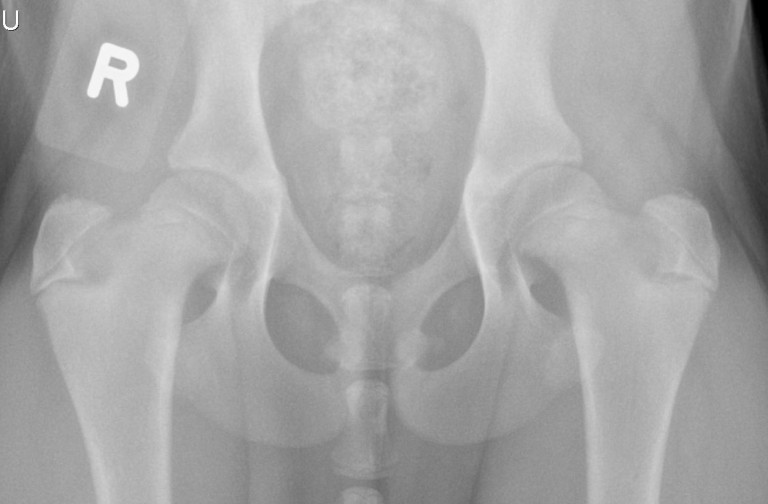
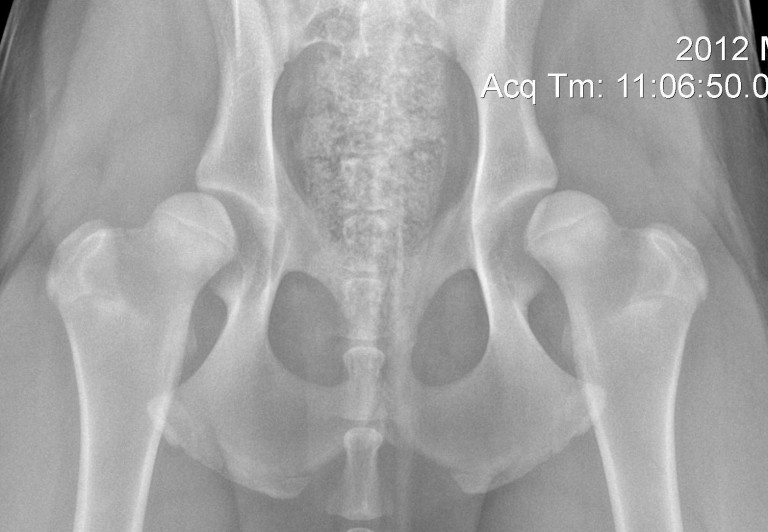
Normal Hip Joints (above) Displastic Hip Joints (above)
Because there is a genetic component to hip dysplasia, we often check the hips on breeding dogs to help determine which dogs are good candidates for breeding programs. We also check the hips on young non-breeding dogs. If we identify hip dysplasia in young dogs (< 5 months old) it’s possible to surgically intervene and change the conformation of the developing hip joint, greatly reducing the chance of developing significant arthritis. The two main ways to check the hips are PennHIP testing and OFA (Orthopedic Foundation for Animals) testing. Below I will describe each type of test and the pros/cons of each test.
OFA Hip Radiographs
OFA radiographs (x-rays) have been used for many years to help diagnose dogs with abnormal or dysplastic hips. For this procedure, one radiograph is taken of the dog’s hips in a standard extended hip position. Sometimes dogs are sedated for the procedure, but it is not required. The radiographs are subjectively reviewed by a veterinary radiologist and given one of seven “grades.” The grades are Normal (Excellent, Good, Fair), Borderline, and Dysplastic (Mild, Moderate, Severe). Click here for a more detailed explanation of the grades from OFA’s website.
OFA Pros:
- No sedation is required.
- Because no sedation is required and only one radiograph is taken, cost is lower.
- Any veterinarian can perform OFA radiographs – certification is not required.
OFA Cons:
- Dogs have to be at least 24 months old. Cannot be performed on dogs under 24 months of age.
- OFA recommends NOT performing this test in animals in estrus (heat).
- OFA certification is no guarantee that a dog will not develop hip dysplasia symptoms in the future, and does not guarantee that the offspring will not develop hip dysplasia.
PennHIP Radiographs
More recently, Dr. Gail Smith (University of Pennsylvania Hip Improvement Plan) developed a different method of evaluating a dog’s hips. Instead of simply looking at the static bony anatomy of a dog’s joint (OFA xrays), he developed a method to evaluate the bony anatomy and soft tissue structures to give us a better indicator of the actual joint stability. In the hip joint, the soft tissue structures include the joint capsule and the ligament of the femoral head. Both are major factors in stabilizing the hip joint and maintaining proper anatomical weight bearing along the acetabulum (cup) and the femoral head (ball). If there is increased laxity (looseness) in the soft tissues of the hip joint, then there will be poor conformation during weight bearing and subsequent joint trauma and osteoarthritis development. Because PennHIP testing evaluates both bony and soft tissues, it is a more comprehensive picture of joint stability and a better predictor of which dogs will develop arthritis.
For PennHIP testing, the veterinarian must be specially trained and certified, and specific equipment must be used. It is required that the dog is heavily sedated for the procedure and a series of radiographs (compression view, distraction view, and hip extended view) is taken. The radiographs are sent to a veterinary radiologist who objectively measures the distraction index. Ideally a tighter fitting joint has less distraction and will be less likely to develop disease.
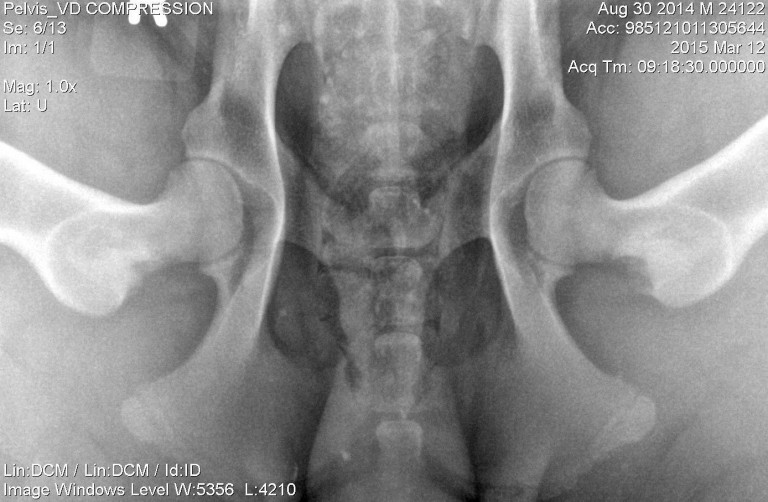
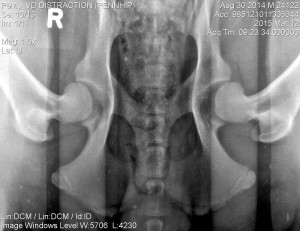
PennHIP Compression View PennHIP Distraction View
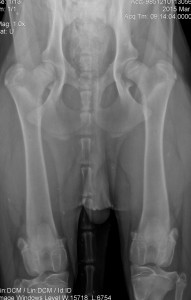
Hip Extended View
PennHIP Pros:
- The PennHIP method of evaluation is more accurate than the current standard in its ability to predict the onset of osteoarthritis (OA).
- The procedure is more objective (comparing numbers) than OFA radiographs.
- PennHIP radiographs can be done as early as 16 weeks of age. This means dogs with dysplastic hips are identified much earlier in their development, when interventional procedures (JPS, triple osteotomy) can be performed. Breeders can also make informed decisions about their breeding stock much earlier.
PennHIP Cons:
- Only certified veterinarians can perform PennHIP radiographs. Find one here.
- Sedation is required.
- Because veterinarians must be trained and certified, sedation is used, and several views taken, the expense is approximately 35% more than OFA testing.
At Best Friends Animal Hospital, we offer both PennHIP and OFA radiographs/testing. Studies show that PennHIP testing provides more accurate information about which dogs will develop arthritis from dysplasia. Because of the significant Pros of the PennHIP method, we do far more PennHIP tests than OFA.
Please call us at (406) 255-0500 if you have questions about either procedure or would like to schedule testing on your dog.

